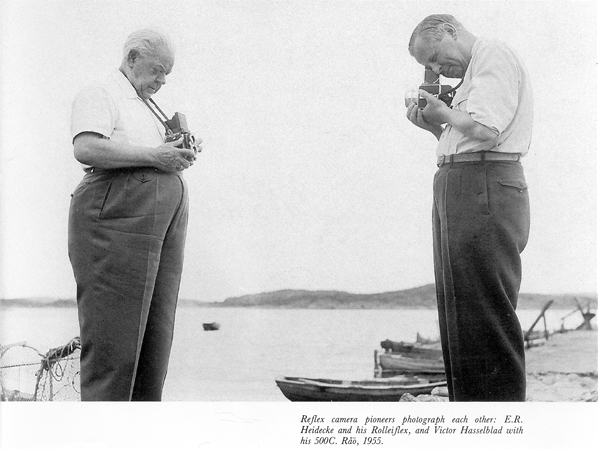To focus with a WLF, you need to use the built-in magnifier which, in turn, needs to be close to your eye. This is more so with a 35mm camera fitted with a WLF. Once focused, you drop the camera to waist level, compose and shoot.
Hi John (and others) This is exactly what I originally thought until I got my first MF camera back in the late 1980's.
My late father (a long time Rolleiflex user) laughed at me when he saw me putting my head next to the viewfinder to focus and said in his soft Scottish accent:
'No, no, no Son - what on earth are you doing!'
I explained to him that I was using the magnifier to focus; he again laughed and proceeded to show me how the magnifier is supposed to be used!
(Went on to waffle how you wouldn't see Mr Heidecke with his head pressed against a viewfinder)
I encourage anyone with a camera that has a WLF to go and get it, sit with it whilst I explain the following:
He told me to put the camera near my belly button and look down into the WLF.
Whilst doing this you can frame/compose the image and rough focus on the ground glass screen all at the same time.
If the aperture was small enough then the rough focus would be good enough
If you required critical focus he told me to flip the magnifier up; which I did.
Looking down on the finder at waist level he told me that the magnifier would only magnify the focusing aid in the centre of the screen - which it did; I now had a nicely magnified view of the split prism only and focusing was a cinch.
He explained putting your head down to the finder only gives you a magnified view of the whole focusing screen - not just the focusing aid; doesn't make focus better, lengthens the time to take the shot and puts the camera between the subject and you.
He did later say the only time to put your head to the focusing hood was to cut out excessive light.
Took some time to get used to (a roll of film) but focusing is so easy this way.


 It's an interesting idea though, and well worth trying while waiting for the snow to melt!
It's an interesting idea though, and well worth trying while waiting for the snow to melt!